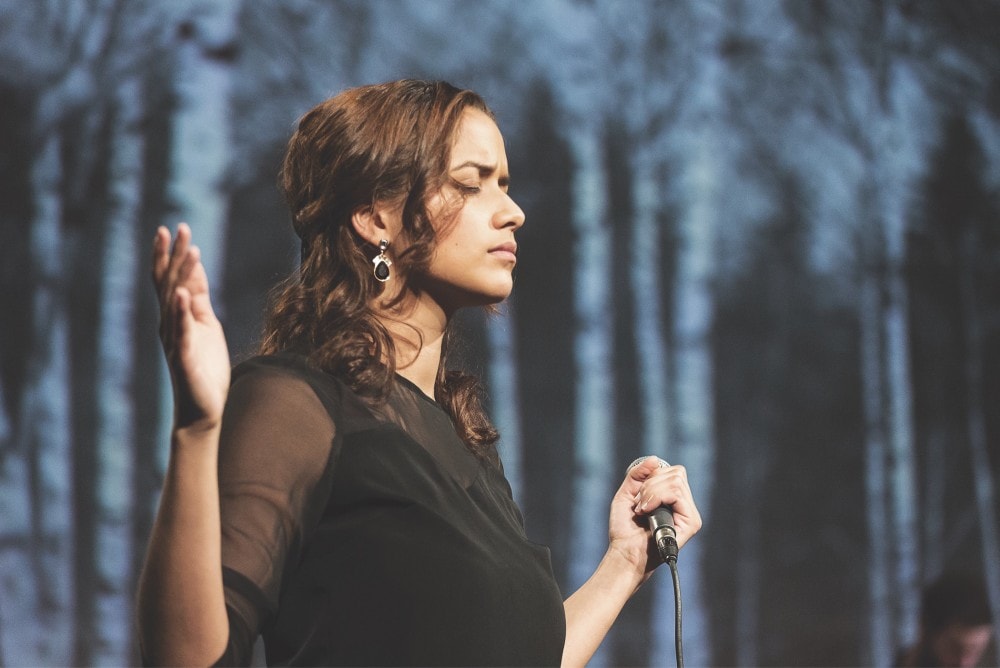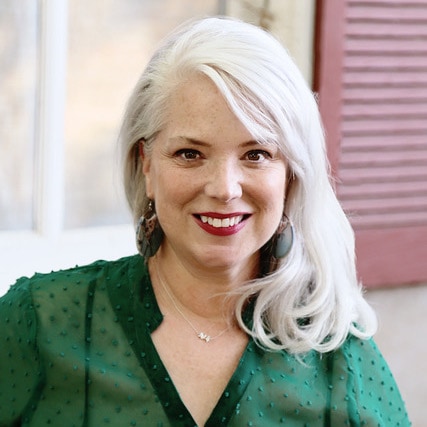I love music. It’s a wonderful gift, and as both a listener and a musician, I take it very personally.
But sometimes the things we love most can also cause our deepest pain.
 Lately I’ve noticed a sense of resignation and weariness among those who steward our worship services. Underneath the typical joys and rigors of ministry life in general, I hear worship leaders revealing a growing dissatisfaction. Some of us are reluctant to voice these thoughts, partly because we don’t want to look like we’re not team players, partly because many of us are tired of the worship wars. We have no desire to bolster disunity in the church.
Lately I’ve noticed a sense of resignation and weariness among those who steward our worship services. Underneath the typical joys and rigors of ministry life in general, I hear worship leaders revealing a growing dissatisfaction. Some of us are reluctant to voice these thoughts, partly because we don’t want to look like we’re not team players, partly because many of us are tired of the worship wars. We have no desire to bolster disunity in the church.
But the institutional norms, systems, and structures that undergird what we think of as worship music (let’s be honest, we usually just call it “worship”) are full of contradictory expectations, divergent values, and impossible objectives. Many times these conditions set us up to fail, and because worship music is often a key part of congregational culture, that failure tends to extend to the church as a whole.
Too often we expect worship leaders to make music that engages everyone and offends no one. We expect worship leaders to be consummate professionals,
spectacular performers, and profound theologians. We expect the music to be reverent enough to facilitate deep reflection, yet energetic enough to inspire boisterous participation. We expect worship leaders to look good, to sound better, and to help us experience God’s best. We expect them to marshal a crew of volunteer musicians with such expert technique and unflagging enthusiasm that they can be coached into a unified sound that rivals that of the top-selling commercial recordings. And we expect all that, week after week, for wages that are at best marginally competitive, and at worst downright exploitative.
“We expect worship leaders to make music that engages everyone and offends no one.”
And you wonder why churches go through so many worship leaders?
Many of our worship leaders have been struggling to varying extents with this identity crisis for years—sometimes decades.
First, there’s the crisis of leadership identity. Is your worship leader expected to preach? To administer sacraments? Should they have formal seminary training, or just learn from experience? Should they be full-time employees of the church? Part-time contractors? Volunteers? Do they direct the choir? Lead the band? Are they considered pastor or musician? Both? These questions are not always fully answered before worship leaders step into leadership.
Next, there’s the crisis of cultural identity. Is the worship music supposed to bring in “the young people”? (Who is that anyway?) Is it supposed to be a cross-generational approach? Should there be separate services? What about racial or ethnic identity—if we do too much of this kind of music, does that mean these people are more important than those people? Where does style fit in? If we’ve finally gotten comfortable doing rock, does that mean it’s time to lean into hip-hop? Should our worship music be a melting pot where everything looks the same, or a bowl of salad or a pot of gumbo where you can still taste the individual ingredients?
Finally, there’s the crisis of technological identity. For the non-musician, here’s a brief tutorial. Acoustic instruments make sounds you can hear with your ears through the air (think flutes, saxophones, ukuleles, etc.). Analog instruments make music by emitting and manipulating sound waves directly (think seventies-era synthesizers or four-track tape recorders). Digital instruments convert those sound waves to and from binary codes for greater fidelity and less degradation.
For many worship musicians, their whole world of music has focused around the use of mostly acoustic instruments. The problem is, most popular music is
created using not only acoustic or analog instruments, but digital ones too. In the twenty-first century, music is not only consumed digitally, but it’s often created
digitally as well—not only with guitars and drums but with laptops, tablet computers, high-end smartphones, sometimes even video-game consoles like Xbox or
PlayStation.
So when worship leaders are expected to relate to and recruit younger musicians, there is often an implicit expectation to bridge the generation gap through the use of digital music technology. But these assumptions aren’t accompanied with instructions, guidelines, or best practices. They’re usually just desperate, Hail-Mary-esque toss-ins, like “Hey, you’re good with computers, right? Can you help [insert person’s name] get the projector to work?”
When leaders lack familiarity with newer technology, expectations tend to follow one of two problematic stances—either they reject new technology outright as irrelevant or dangerous, or they embrace it so wholeheartedly that they want wildly unrealistic results that don’t match their investment of time or money. Just because your youth pastor is a competent guitarist and has used GarageBand or iMovie doesn’t mean they’re ready to record an album or edit a feature film.
And even if the worship leader feels technologically competent, the pace of innovation in technology means the pressure to adapt to new advances is ever-present. Even the most techno-savvy person can still sometimes feel lost and outdated.
Back in 2005, my wife and I felt a call to move from Chicago—where we’d met, earned our degrees, married, and were just beginning to settle down—back to my hometown of Portland, Oregon. The impetus for the move was my transition into a leadership role in the worship ministry at Irvington Covenant Church, the church my dad founded and where he served as senior pastor.
The church was approaching its twentieth year, and it had a reputation for excellence in worship. When I came on, I was one of eight paid staff, which included three other worship musicians (four if you counted my father, who is also a very accomplished musician).
The truth is, there were signs of entropy and disarray all around me, but I was so excited to begin my new chapter, I couldn’t see them. So instead of beginning a new era of thriving worship ministry, I arrived in a period of prolonged turmoil, which resulted in dwindling attendance and smaller budgets. Four years later, all of the other staff members were gone. Pastor, associate pastor, youth pastor—even the custodian. In the aftermath, I was asked to lead the worship ministry plus uphold the legacy of excellence I’d inherited, with little in the way of resources, human or otherwise.
I was tempted to quit at that point, but I realized that with a lack of support came a lot of autonomy and freedom to experiment. So I did, specifically with the church’s main keyboard, a Yamaha Motif. My background with hip-hop production meant I knew how to program beats and rhythms, so I continued to sing most of the gospel and contemporary Christian music songs in our church’s repertoire, but instead of playing them by hand on the keyboard, I started using accompaniment tracks that I preprogrammed. Not only could I create a “full band” type of sound without a full band of musicians, but automating the playing meant I could occasionally take my hands off the keyboard and the music kept going.
At first this was a little weird and awkward. I suspect a few people thought I was cheating, but the reality was it made things a lot easier. Having my hands freer meant I could be a better director onstage, and while I could change the order on the fly, the songs still had a consistent arrangement that made it easier for vocalists and other band members to follow along. After a while, people started to get used to it, and I realized that this way of making music actually felt more native to me than playing it by hand.
Now, as an itinerant worship leader and music teacher, I use this approach for almost all of the worship music that I lead, teach, or perform. And it’s much more than a gimmick or a trick to impress people—it’s what I do to address the three elements of my worship identity.
It helps me focus more clearly on my leadership identity, because being free from having to play all the chords and distinctive riffs means I can focus on what’s happening in the moment—what I should say from the platform, how well my singing or playing is blending with the other musicians onstage, and how much audience members are engaging in the worship. Because the songs are broken up into sections, I can still remain extemporaneous and Spirit-led, making songs longer or shorter as I see fit. And it makes rehearsals smoother and easier, because there’s less pressure on each musician to play or sing perfectly. That means I have more time to connect with people on the worship team, to hear their stories, to enter into their joys and pains, and to pull them together to pray.
It also helps me to maintain a sense of technological identity because I’m using a tool that’s easily compatible with digital music workstations (it’s easy to create
mp3 recordings that can be disseminated quickly and easily via email). At the same time it can still replicate the sounds of acoustic instruments like guitars, flutes, violins, etc.
It’s also much easier to connect with adolescents, teens, and millennial adults when I can play the kinds of songs they hear online or through the radio, using a tool with controls that resemble the devices they use to listen to music every day. But the fact that my instrument still has the tonal structure and look of a piano means I can still address basic elements of music theory—scales, chords, notes, etc. From a production standpoint, it gives me the best of both worlds.
Most importantly, using keyboard tracks frees me to be true to my cultural identity. Using the Yamaha Motif enables me to do songs without depending on players in the rhythm section to nail the stylistic nuances that gospel, jazz, and hip-hop require. As a result, many of the (mostly white) worship musicians I collaborate with are grateful for the chance to play tunes from the catalogs of gospel luminaries like Israel Houghton, Fred Hammond, and Tye Tribbett without worrying that they’re going to screw them up.
Not only that, but my biggest strength as a musician is as an arranger, which means that often I take popular choruses that people already know (and in some cases, may already be tired of) and inject new life into them with fresh arrangements that dabble in different styles. In fact, using tracks enables me to do not only gospel, jazz, and hip-hop—the styles I am most familiar with—but also provides me a range of sounds and musical idioms to do arrangements in rock, pop, techno/EDM, even acoustic or orchestral styles. Songs that I couldn’t ordinarily play myself, I can arrange through existing patterns and riffs, leveraging the technology to expand beyond my own level of dexterity.
The main reason I advocate for people to use tools like this one is because once you learn how, you can use it to craft your own style of worship music. Yes, it’s absolutely a great tool for diversifying your musical palette (mostly because black styles of music like gospel, jazz, and hip-hop tend to be more keyboard-driven than guitar-driven), but even if that’s not a priority for you or your church, it can still help you do your music in an excellent way.
Maybe a Yamaha Motif isn’t going to work for you. It’s just one way I found to address the needs in my context—a way to facilitate worship well with limited resources. Either way, take the time to ask the right questions and try a few things out. It’ll help you find the right tools to make your worship experiences more flexible, intentional, diverse, and effective.
More important, if you’re a worship leader and you feel pulled into a thousand different directions, it might be time to talk with your church leaders about the church’s overall direction. If it feels dominated by one cultural voice, you might want to ask why. If you feel like your role as worship leader isn’t clearly defined, it’s time to find out which tasks and responsibilities are most important, and see if that lines up with your ability and passion. Answering the whys of the overall church vision can inform the hows in your job description.
But it can’t stop there. Once those questions have been addressed, then as leaders you must prioritize. Decide which approaches, practices, and techniques to focus on, and be willing to drop all the rest. Intentional diversity can have kingdom impact, but you can’t be anything to anyone if you try to be everything to everyone. Find some resources that fit you as a church, and take time to digest and apply the solutions you find. Then, when it’s time, work with the pastor and other stakeholders to ensure that the priorities you’ve established are reflected in the annual budget.
“You can’t be anything to anyone if you try to be everything to everyone.”
Finally, remember that worship ministry is primarily about people. People cannot change established patterns and attitudes overnight. You will need a process that provides leaders an opportunity to experiment and people time to buy in to the vision. If you decide to de-emphasize certain tools, instruments, or musical expressions, do so gently, gradually, and intentionally.
If you can do all of that, you’ll be well on your way to putting that identity crisis in the rearview mirror where it belongs. And then perhaps you might consider taking on a less formidable challenge, like, say, solving world peace.
Resources
For information on Motif Worship go to MotifWorship.org or YouTube.com/MotifWorship.
Jelani also recommends:
- Worship across the Racial Divide, by Gerardo Marti
- “Multicultural Worship: What, Why, Who & How” (YouTube seminar)
- Multicultural Worship Leaders Network (MWLN.org)
- Better Together (Covenant worship leaders’ Facebook group)














